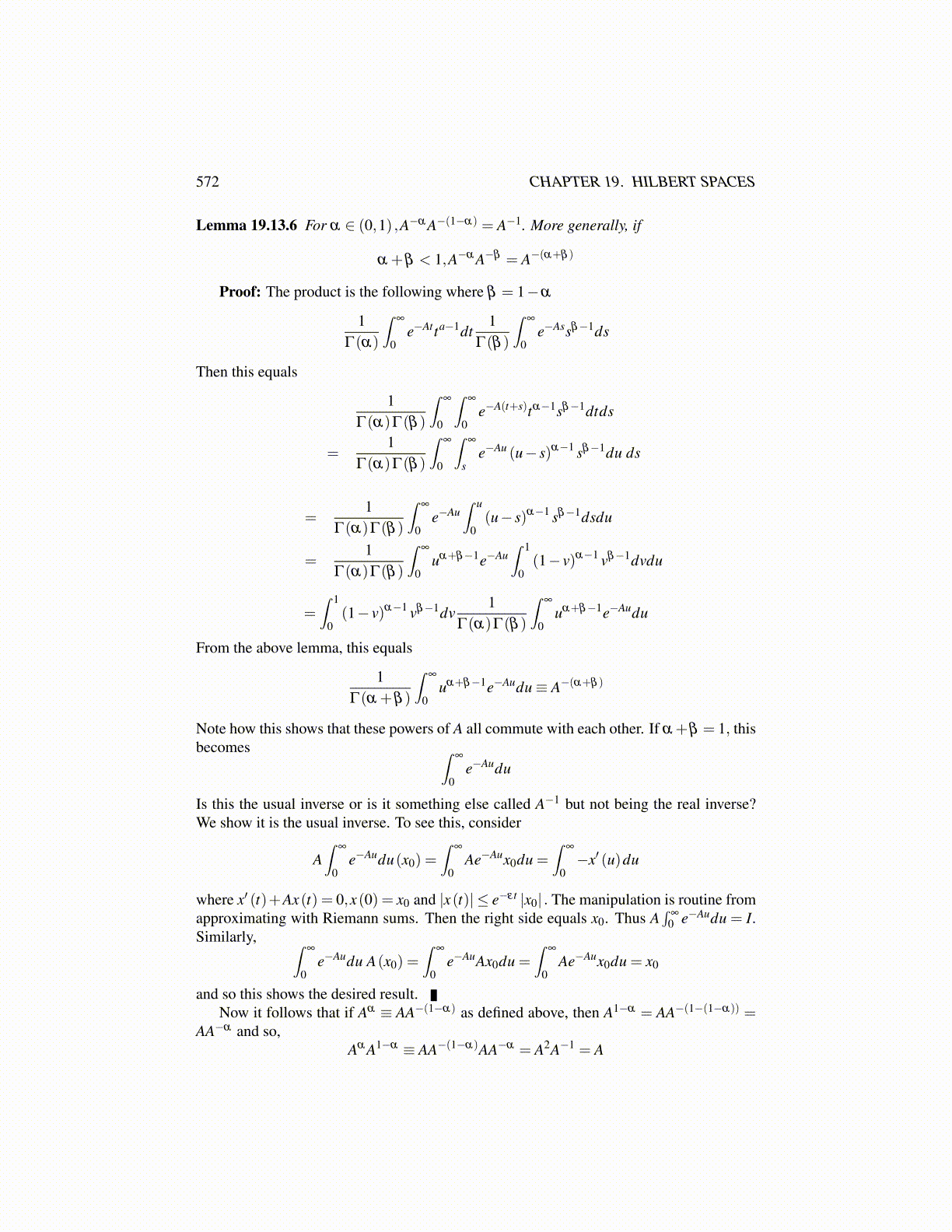
572 CHAPTER 19. HILBERT SPACES
Lemma 19.13.6 For α ∈ (0,1) ,A−α A−(1−α) = A−1. More generally, if
α +β < 1,A−α A−β = A−(α+β )
Proof: The product is the following where β = 1−α
1Γ(α)
∫∞
0e−Atta−1dt
1Γ(β )
∫∞
0e−Assβ−1ds
Then this equals
1Γ(α)Γ(β )
∫∞
0
∫∞
0e−A(t+s)tα−1sβ−1dtds
=1
Γ(α)Γ(β )
∫∞
0
∫∞
se−Au (u− s)α−1 sβ−1du ds
=1
Γ(α)Γ(β )
∫∞
0e−Au
∫ u
0(u− s)α−1 sβ−1dsdu
=1
Γ(α)Γ(β )
∫∞
0uα+β−1e−Au
∫ 1
0(1− v)α−1 vβ−1dvdu
=∫ 1
0(1− v)α−1 vβ−1dv
1Γ(α)Γ(β )
∫∞
0uα+β−1e−Audu
From the above lemma, this equals
1Γ(α +β )
∫∞
0uα+β−1e−Audu≡ A−(α+β )
Note how this shows that these powers of A all commute with each other. If α +β = 1, thisbecomes ∫
∞
0e−Audu
Is this the usual inverse or is it something else called A−1 but not being the real inverse?We show it is the usual inverse. To see this, consider
A∫
∞
0e−Audu(x0) =
∫∞
0Ae−Aux0du =
∫∞
0−x′ (u)du
where x′ (t)+Ax(t) = 0,x(0) = x0 and |x(t)| ≤ e−εt |x0| . The manipulation is routine fromapproximating with Riemann sums. Then the right side equals x0. Thus A
∫∞
0 e−Audu = I.Similarly, ∫
∞
0e−Audu A(x0) =
∫∞
0e−AuAx0du =
∫∞
0Ae−Aux0du = x0
and so this shows the desired result.Now it follows that if Aα ≡ AA−(1−α) as defined above, then A1−α = AA−(1−(1−α)) =
AA−α and so,Aα A1−α ≡ AA−(1−α)AA−α = A2A−1 = A